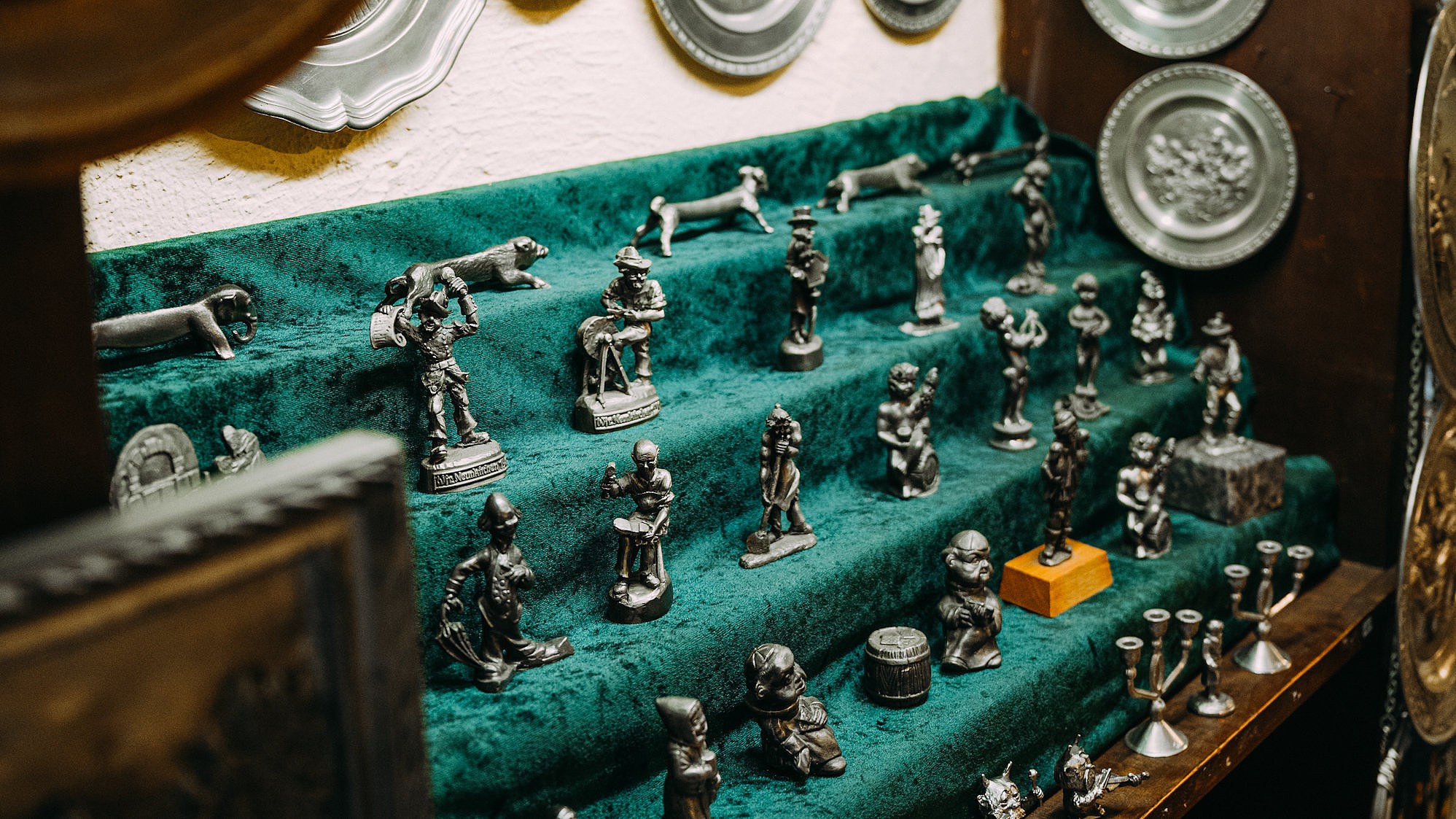
Tin Foundry
More tin in your life!
Although the craft of casting tin has a long tradition in Nuremberg, the tin foundry in the Craftsmen’s Courtyard is one of the last remaining workshops of its kind in the city.
Heated to 240°C, the tin melts and can be poured into a form. If you are lucky, you can watch Dragan Bunyevacski through a small window in his workshop as he works. All the forms which Dragan uses were designed and made by his uncle Bato, who operated the tin foundry in the Craftsmen’s Courtyard for more than 40 years, before his nephew inherited the business. After casting, the object is patinized, washed, machined and polished. “The first part goes quickly and easily,” says Dragan “What comes after requires a steady hand and attention to detail and might take many days to complete.”
Tin wares from Nuremberg have always enjoyed a good reputation. When the tin foundry opened in the Craftsmen’s Courtyard in 1972, there were still around 30 other tin foundries in the city. Today, the craft is rarely practiced. Yet tin is an extremely versatile material, which was originally alloyed together with copper to produce bronze.
Thanks to its low melting point in comparison with other metals, tin is easy to work with. While tin, the “silver of the common man”, was once used for decorative objects and items of everyday use such as utensils, it is used today for alloys and electrical soldering.
Dragan Bunyevacski
At the beginning of the 1970s, Georg Stanisavljevic opened his tin workshop in the Craftsmen’s Courtyard. When he died in 2019, it was clear to his nephew Dragan that he should continue his uncle’s lifework. He moved to Germany in order to take over the workshop.
My Craftsmen's Courtyard
“The neighborhood feeling in the Craftsmen’s Courtyard is really great. I was warmly welcomed and quickly found contacts and therefore improved my German. There is always someone among the other owners who will meet you for a coffee and a chat.”
Categories at Craftsmen's Courtyard
The Hexenhäusle
